The Raven Discovering Mankind in a Clamshell Item Number: Nb1.488 from the MOA: University of British Columbia
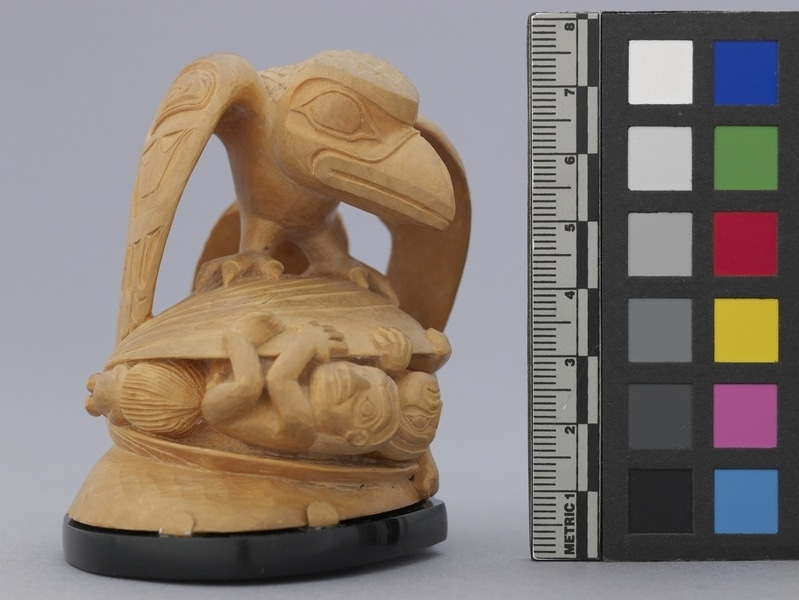
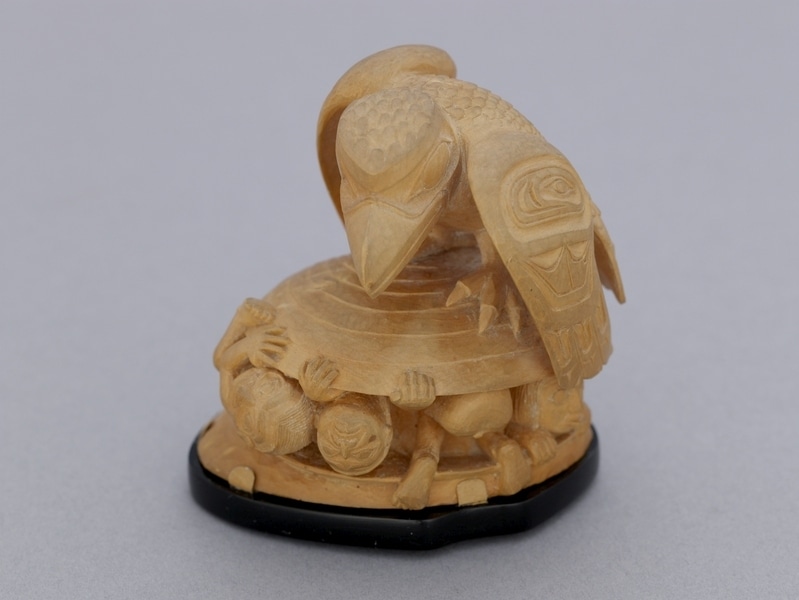
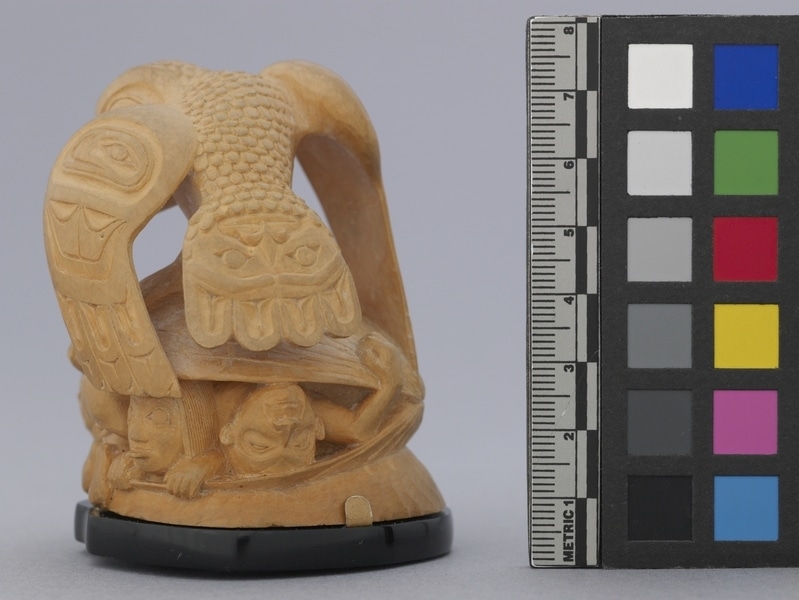

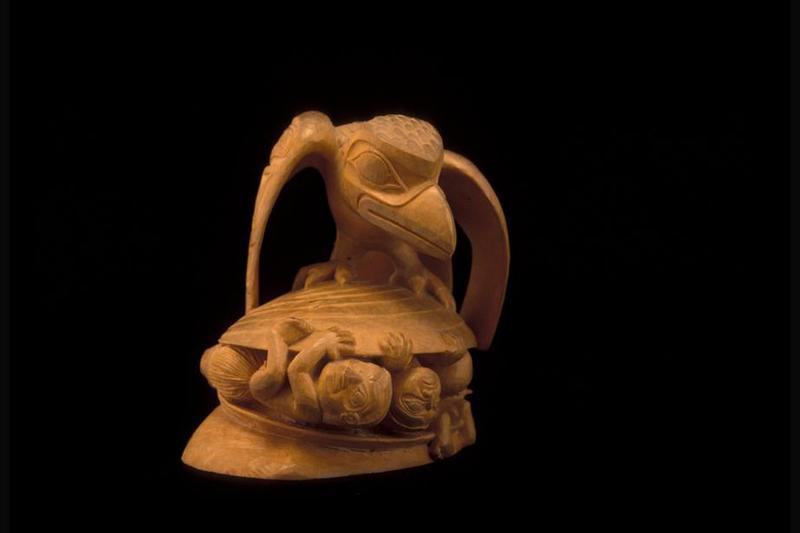
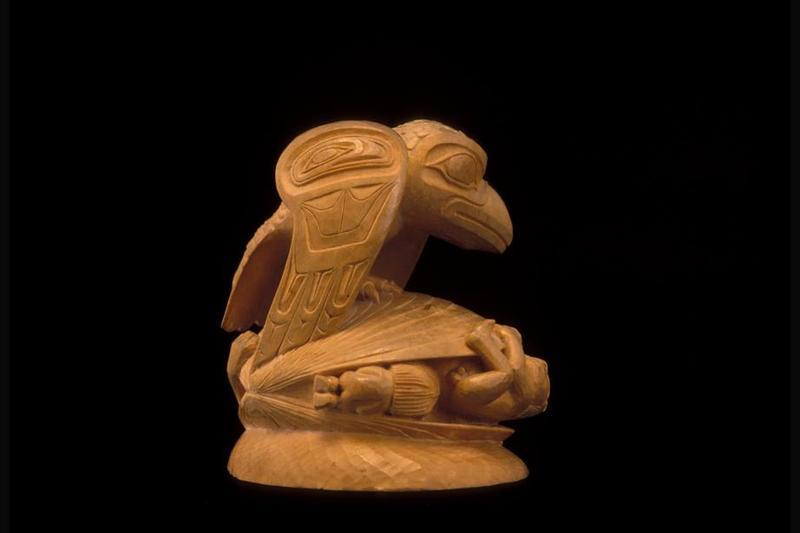
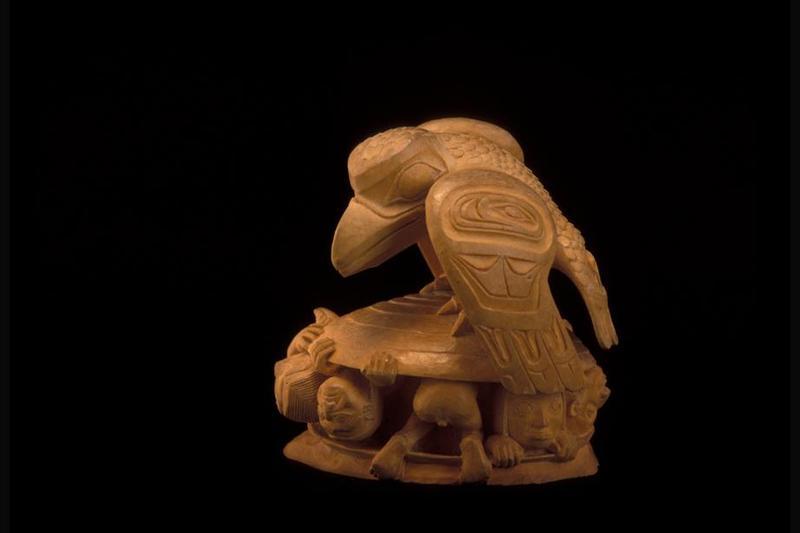
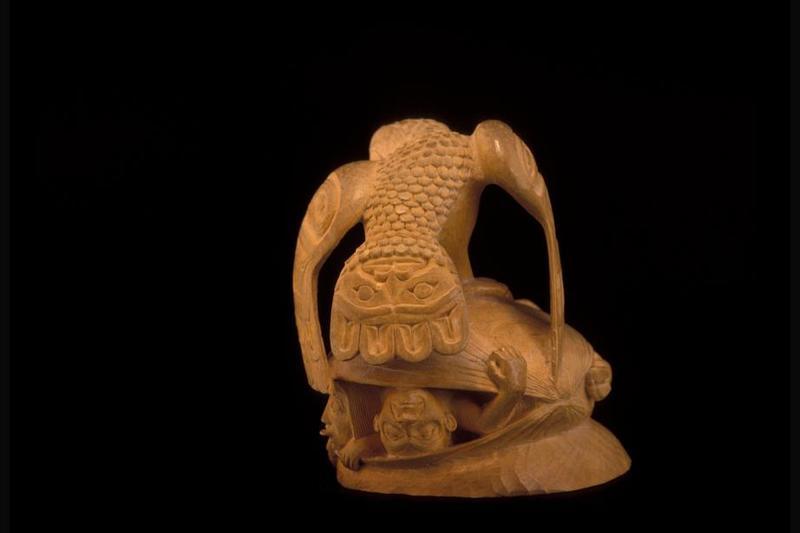
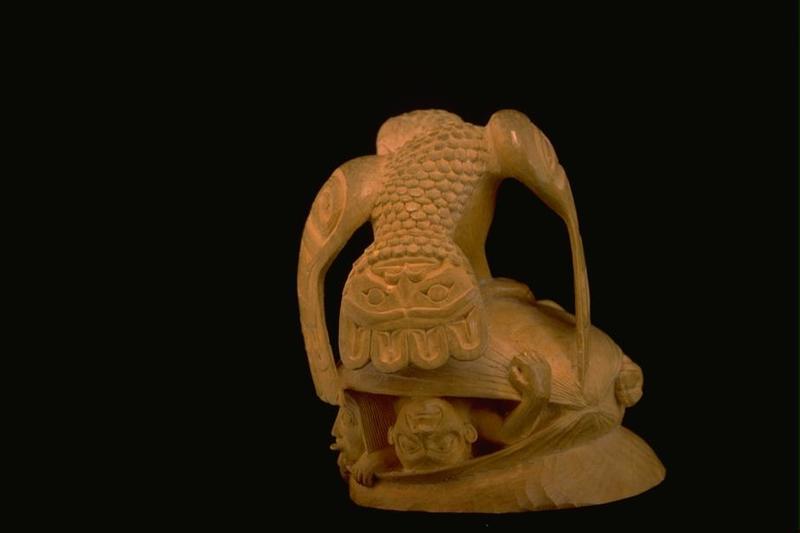
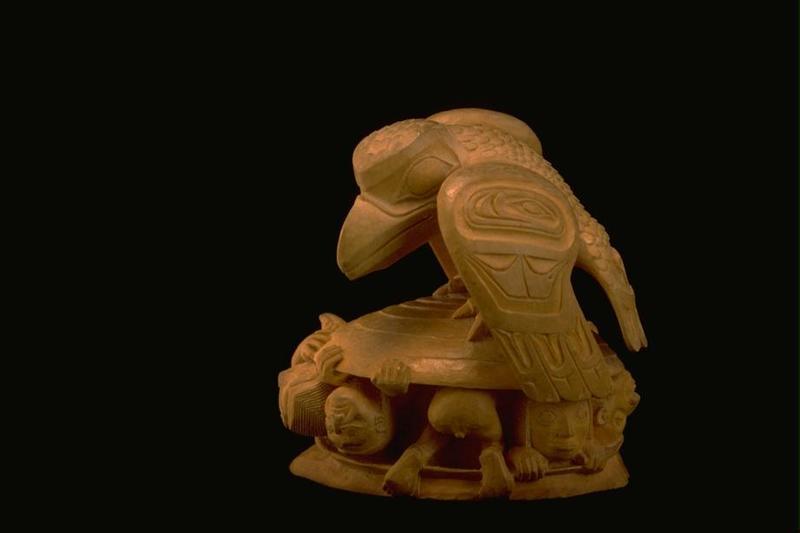
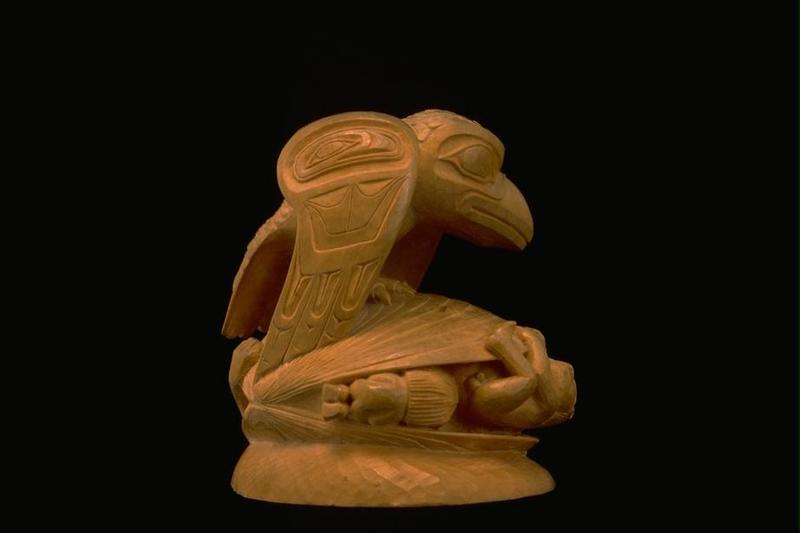
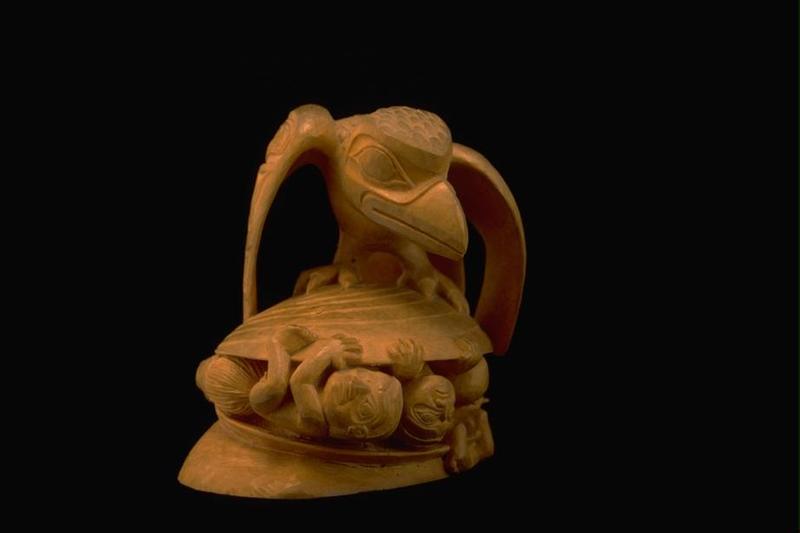
Description
Small, three dimensional wood carving of a raven standing atop a partially open clamshell from which six naked human figures are emerging. Raven: hunched body, wings curve away from body on each side with tips touching top of clamshell; head is turned slightly to side on right, short straight beak, large depressed eye area contains ovoid pupil in pointed eyelid lines; salmon- trout head at top of each wing followed by a series of u forms; overlapping feather design on top of head and down back to inverted frontal face on tail; short legs end in feet with four talons. Clamshell: concentric growth rings on upper shell, rim of lower shell visible beneath humans; humans from side on left: 1) back of a figure with feet beneath bottom, arms next to body, short straight hair; 2) figure has upturned frontal face, one hand and foot grasp upper rim of shell, exposed male genitals; 3) inverted frontal head, hands clasp upper rim of shell; 4) back lower portion of a male figure with legs bent, feet extend over rim of lower shell; 5) frontal head has labret in lower lip, hands clasp lower rim of shell; 6) inverted frontal head, bent arm at side on right with hand against upper shell. Subtle varying expressions on the flat featured frontal faces. Clamshell rests on a partial oval worked base. Artist inscription on base.
Cultural Context
contemporary art
Iconographic Meaning
The Haida legend of Raven and the First Humans: one day after the great Raven was walking along the beach at Rose spit in the Queen Charlotte Islands when he heard a sound emanating from a clamshell at his feet. He looked more closely and saw that the shell was full of small humans. He coaxed, cajoled and coerced them to come out and play in the wonderful new world. Some immediately scurried back into the shell, but eventually curiosity overcame caution and they all clambered out. From these little dwellers came the original Haidas, the first humans.
Item History
- Made by Bill Reid (Maker) in Vancouver, British Columbia, Canada during 1970
- Owned by John Keith-King and Sherry Grauer Keith-King before February 12, 1986
- Received from John Keith-King (Seller; donor), Sherry Grauer Keith-King (Seller; donor), Museum of Anthropology Shop Volunteers (Funding source) and Museum of Anthropology Donations Fund (Funding source) on February 12, 1986
What
- Name
- The Raven Discovering Mankind in a Clamshell
- Identification Number
- Nb1.488
- Type of Item
- sculpture
- Material
- boxwood wood
- Manufacturing Technique
- carved
- Overall
- height 7.6 cm, width 7.0 cm, depth 6.2 cm
Who
- Culture
- Haida
- Creator
- Bill Reid (Maker)
- Previous Owner
- John Keith-King and Sherry Grauer Keith-King
- Received from
- John Keith-King (Seller; donor), Sherry Grauer Keith-King (Seller; donor), Museum of Anthropology Shop Volunteers (Funding source) and Museum of Anthropology Donations Fund (Funding source)
Where
- Holding Institution
- MOA: University of British Columbia
- Made in
- Vancouver, British Columbia, Canada
When
- Creation Date
- during 1970
- Ownership Date
- before February 12, 1986
- Acquisition Date
- on February 12, 1986
Other
- Item Classes
- carvings & sculpture
- Condition
- good
- Accession Number
- 1104/0001